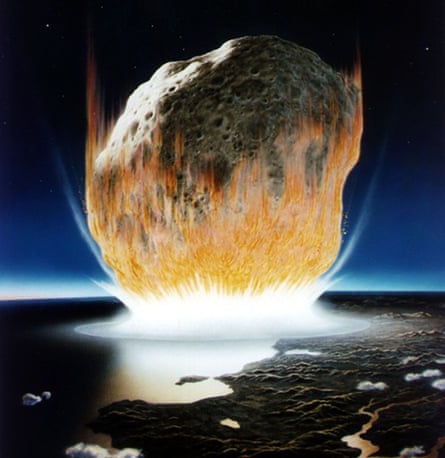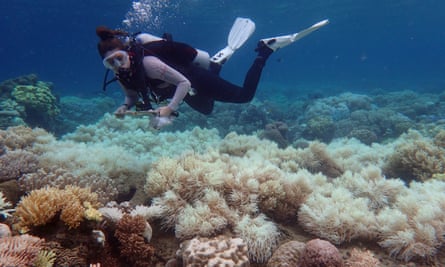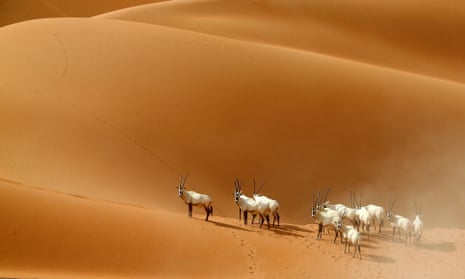At one level extinction is normal and natural. Most of the diversity of life on Earth that has ever existed is now gone, and all species will one day pass from being extant to being extinct. But although it is normal for species to die out, the normal rate is considered to be quite low. On average perhaps just one or two species go extinct in any given year out of all of the bewildering diversity of beetles, mammals, plants, microbes, worms, fungi and fish. In short, a tiny percentage of the literally millions of species.
The current rate of loss though, while naturally hard to measure (not least when we have perhaps only described around 20% of the species on Earth) is considered to be considerably higher. There is a growing list of species we know have gone extinct in the last century and plenty of others are critically endangered or already doomed to extinction (some species have no known breeding animals, or are known from populations of only males). Even though many species are still apparently flourishing they are at a fraction of their previous distribution and populations – there may be tens of thousands left in one forest, but if they formerly numbered in the millions and were much more widespread, then they are now clearly very vulnerable to an outbreak of disease or a single disaster like a flood or fire. Naturally then, there is huge concern about what is happening to these species and what it might mean in the future and scientists are keen to show how bad this may be and for people to respond.
There have been suggestions for many years that the Earth is in the process of a sixth mass extinction, which of course somewhat glosses over the fact that palaeontologists recognise five previous mass extinction events (as well as many more others which also accounted for significant fractions of the Earth’s diversity at the time). These go by the names of the geological ages that they ended, or the names of the two ages that they separated.

The oldest is the Ordovician-Silurian extinction which is linked to mass glaciation leading to rapid cooling and then falling sea levels. This accounted for the deaths of around 85% of marine species, though life on land was not very diverse at this point and we have a limited idea of its effect on terrestrial plants and animals.
Next is the Late Devonian extinction which was responsible for around 75% of species being lost. In geological terms, this was rather protracted and may have had multiple causes. Major candidates for part or all of these effects are sea level changes and ocean anoxia which would then leading to rapid cooling.
The End Permian extinction is known as ‘the great dying’ and with good reason. Volcanic eruptions and the mass release of carbon dioxide and methane led to rapid warming. A staggering 96% of species are estimated to have died out during this event.
Not too long after this, the end Triassic extinction took out around 70% of species (and incidentally paved the way for the takeover of the dinosaurs). The origins of this event are not clear but suggestions include vulcanism and climate change and the planet may have warmed or cooled rapidly.
Finally, there is the famous Cretaceous-Tertiary extinction which took out most of the dinosaurs (the birds limped over the line and diversified) which is known to have been the result of a massive impact from space, perhaps coupled with huge volcanic eruptions. This would have led to rapid cooling and a dramatic shift in climate, and once more, around 75% of the species alive are estimated to have been lost.
Although there is much uncertainty over exactly what triggered some of these five great extinctions (and various other minor ones), they do have something in common – sudden and dramatic changes in climate. Species have a variety of responses to such changes, some can simply migrate to new environments (birds especially), of if they are already tolerant of wide ranges of conditions they may be able to stay and simply get on with things. However, many lack the first option (not least plants) and lack the adaptions to the latter, and so if such species are to survive they need to evolve. This, though, takes time. It can take multiple generations to see any kind of adaptation to a new environment or different climate (fur can’t evolve overnight) and in the meantime if conditions are harsh, most individuals are dying or struggling. Not only that, but inevitably they will rely on other species and other resources they need (light, water, pollinators for plants, food from other organisms for animals) which may be in short supply or themselves have moved or died. It’s no big surprise that any kind of disturbance to the climate can have a massive and cascading effect – each species that is massively reduced in population or killed will take with it multiple other species.
A big tree may provide leaves and nuts for dozens of other species, pollen for numerous insects, wood for beetles and act as a home for various birds and bats, plus all the parasites and predators associated with these. It can take decades for trees to reach maturity, and if in that time the climate has changed multiple degrees and become much drier (or wetter, or monsoonal etc.) then both the current population is doomed and there’s no time for evolution to act on their offspring and these later generations to adapt.

Looking back, it is hard not to look at some of the major extinction culprits (mass release of carbon dioxide and methane, rapid warming, climate change, sea level changes) and wince. Add to that the ongoing issues of pollution, fragmentation of landscapes and habitats, introduction of invasive species and things like overfishing and it is hard not to appreciate that the suggestions of an ongoing mass extinction are no exaggeration. Certainly we have not wiped out 75% of the living species around us, but mass extinctions take perhaps thousands or tens of thousands of years to have an effect and reach the point where so many species have been lost and entire ecosystems have collapsed or gone. Areas like coral reefs and rainforests are especially diverse and especially vulnerable – a few percentage points of the global species total really can be found in surprisingly small pockets of high diversity and we know that these are in grave danger and could be gone in a single human lifetime, let alone the year 7000.
It is hard not to worry thatwhile the numbers of losses might not seem dramatic now, the problems are ongoing and only likely to worsen. Species we do not even know exist are being lost, and it’s impossible to know what cascades may follow. The lesson from the past though is clear, such rapid changes will lead to dramatic losses and if we are to preserve the world’s biodiversity in the wild, we desperately need to protect and indeed restore lost environments, and restore lost populations as well as trying to halt the man made effects of climate change and our other destructive tendencies.

Comments (…)
Sign in or create your Guardian account to join the discussion